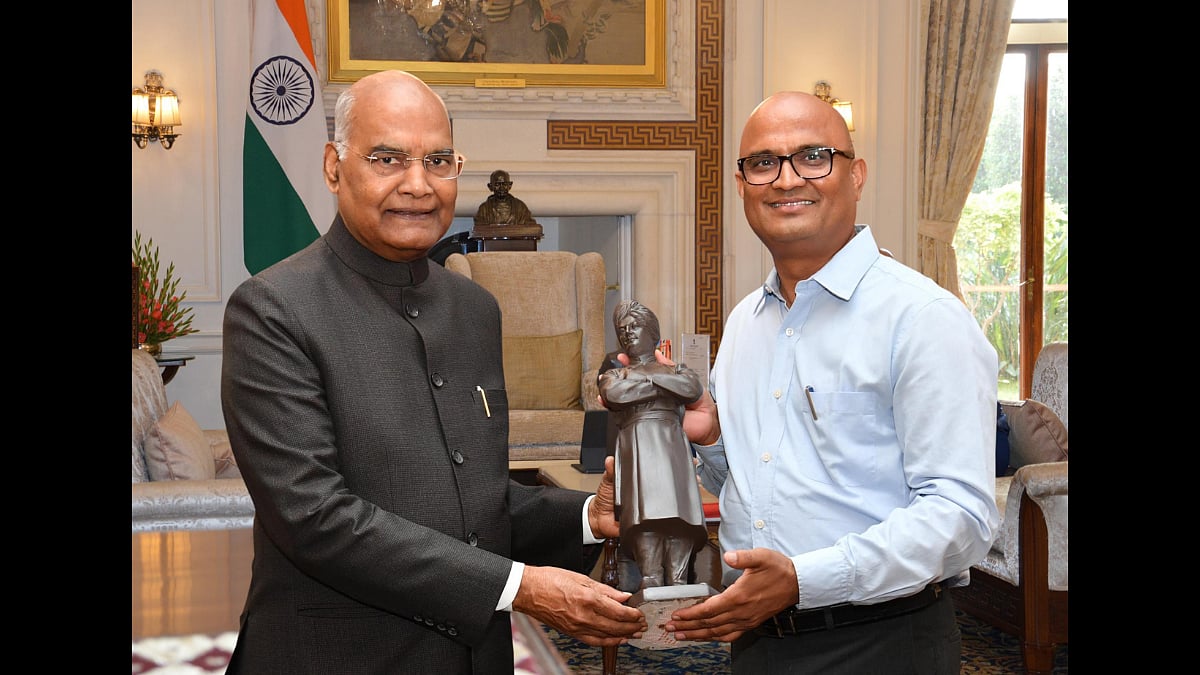Veganism is not a fad, rather a trend that is here to say. “Veganism has an obvious link to leading a sustainable lifestyle and the slowing down of the irreversible effects of climate change on the planet,” asserts Sonal Ved.
“According to reports, the Indian vegan food market was valued at $1,372.3 million in 2022, and it is expected to grow further,” she continues, adding how there is a new wave of authors writing cookbooks on acquiring a vegan lifestyle, thus supporting the cause of saving the planet.
A vegan is a person that seeks to eliminate the use of animal products (such as meat, dairy, eggs, and other animal-derived ingredients) in their diets. Its environmental benefits are rooted in its impact on aspects of resource consumption, greenhouse gas emissions, and land use.
While both health and environment benefits of veganism are talked about enough, people deter from following this lifestyle due to the perception that vegan recipes are complicated in nature. But Ved’s new book published by HarperCollins, The Indian Vegan: Easy Recipes for Everyday Cooking, is here to bust this and many other myths.
Adopt sustainable living

In this book, Ved addresses misconceptions: Veganism is too radical, too hard to follow, impossible to cook Indian food without paneer and ghee, etc.
Ved has previously written two books on Indian food – ‘Tiffin: 500 Authentic Recipes Celebrating India’s Regional Cuisine’ and ‘Whose Samosa Is It Anyway?’. This made her realise that Indians have been savouring plant-based textures in place of meat for several decades.
“Take, for instance, a dish called ‘kele ki machli’, which literally translates to ‘fish of raw bananas’. This is a Kayasth preparation from the northern region of India, and comes from the kitchens of a cultural sect that originally mingled with the Muslim Mughals, and therefore, needed to cook and eat food that resembled the diet of the court rulers,” Ved shares.
Similarly, the Bengali ‘dhoka’r dalna’ is an intrinsic part of their niramish, no onion, or garlic repertoire, Ved adds. “The word ‘dhoka’ here means ‘betrayal’, signifying fooling the family into eating a vegetarian meal and tricking them into believing that the lentil cakes are in fact chunks of meat. These are just two examples of how beautifully Indian cooking utilises ingredients such as raw bananas, its stem, the insides of a plantain flower, raw jackfruit and sometimes chickpea flour dough instead of meat.”
And so, in her book too, Ved uses these references to inform readers of the vegan eating habits practised by several Indian communities – from Bengal to Maharashtra to Rajasthan. “Like pieces of mutton or fish, these vegan ingredients are cubed and marinated, or minced and added to gravies and curries.”
Nourishing body and soul
Ved, born into a Gujarati family, has been a vegetarian all her life. But veganism was a new beast even for her. A year before she landed this cookbook deal, Ved was inspired to follow the vegan diet on a whim.
“My journey began with cutting the cord with yoghurt, an ingredient I had been obsessed with all my life,” she recalls how she set on her vegan journey. “The next step included letting go of animal milk, and instead glugging glasses of iced lattes made with fresh coconut milk. I made bliss balls with nut milk remains, ate more fruits and greens than ever before.”
The result was Ved feeling like the best version of herself. Safe to say she practices what she preaches. “I wanted to write a cookbook to make a record of Indian recipes that were vegan by nature and could be found in every single part of India,” she confesses.
Her book goes beyond ad-hoc solutions like replacing paneer with tofu. “I chanced upon a very rare curry called Dhanwani from Madhya Pradesh. While most kadhis or curries from Rajasthan or Gujarat use yoghurt as a base, this dish relies on a base of red lentils. It tastes divine with white rice.”
Out of the exhaustive list of delicious vegan recipes she mentions in her book, our favorites are a Sindhi bhee (lotus root) kebab and the Maharashtrian kothimbir vadi (a coriander leaves-based snack).
For a sweet tooth
The book has a range of non-dairy milks. Ved has also shared recipes on what to do with the molasses of these alternative milks.
“I am and always have been big on healthy smoothies and milkshakes and therefore it was such an important part of the book for me,” Ved says. “From seasonal fruits like strawberry and mango, how else do we get the best of the season, unless we blend it into whole milkshakes? The book tells all.”
The book also includes creative ways to whip up vegan desserts. Ved calls this section “the toughest but the most gratifying chapter of the book”. “After all, what is Indian meetha without milk, ghee and mawa?” she teases.
We ask her to pick a favourite. “It has to be cashew milk firni. This sweet rice porridge tastes best when it’s eaten chilled. Serve it as the conclusion to your Indian-themed spread, your Sunday lunch or a special festive dinner — you are sure to impress!”













